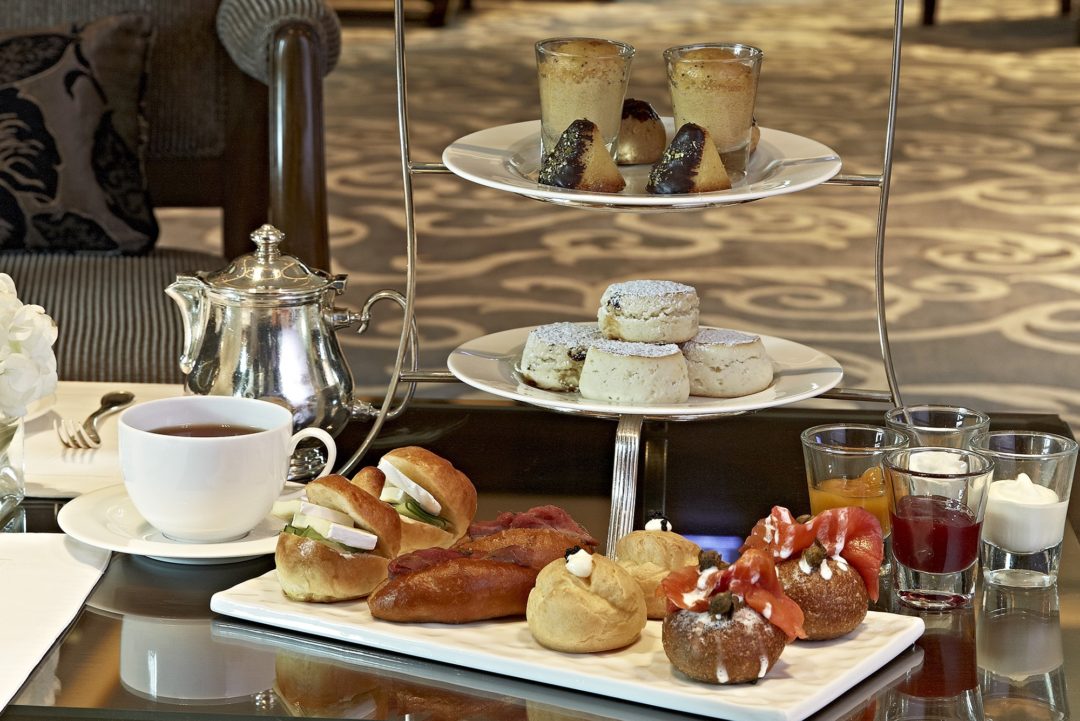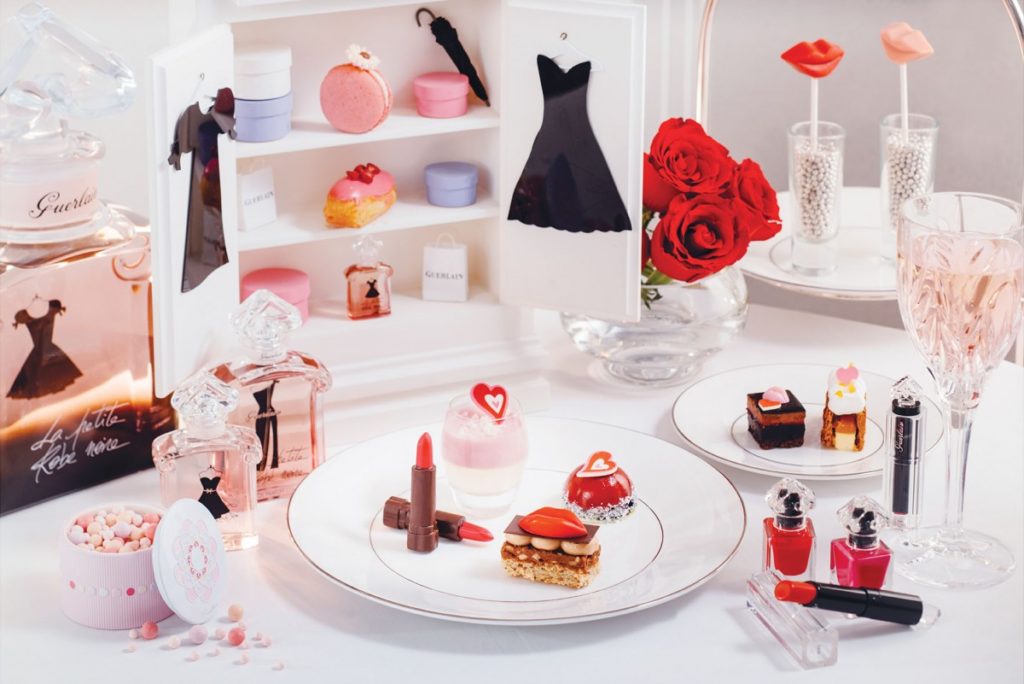– By Maciek Klimowicz –
How the West took one of the world’s most noble beverages and made it fun.
According to legends, the Chinese discovered joys and benefits of tea almost 5000 years ago. The Japanese tea ceremony dates back to the 15th century, though tea was used in religious rites even earlier. With less than 200 years of history and less than noble origins, the western “High Tea” tradition fades in comparison. Yet it is that manner of drinking of the world’s second most popular beverage (water comes first) that has become an integral part of high-end hospitality.

Banyan Tree Bangkok
Let’s begin by setting the record straight – the fancy meal comprising extravagant pastries and mini-sandwiches, paired with a selection of teas and served at some of the world’s most luxurious hotels isn’t really “High Tea”. In fact the correct name for such event is “Low Tea” as finger food and heartwarming beverages are served on low coffee tables and consumed while sitting in armchairs and sofas. Classic “High Tea” was served at the high dining table, comprised a mug of tea, bread, butter, meats, cheeses and pickles and was consumed by the hard working families of the industrial revolution period as a pick-me-up meal after a long day’s work. The term “High Tea” was then highjacked by the upper classes, who seemed to think it sounded rather noble, and so the fancy afternoon tea was turned into “High Tea”.
Not to say that the aristocrats didn’t have their own tea traditions. They sure did, especially that tea was a luxurious and expensive product reserved only for the royals and nobles when it first reached Europe, precisely France in 1636. And even though the first shipment of tea leaves landed in London twenty two years later, it was the Britons who, over the next couple hundreds of years, made tea their national drink, leaving the poor French with inferior substitutes such as café au lait or wine.

W Retreat Koh Samui
One of the characters who contributed most to the long lasting English romance with tea was Anna Maria Stanhope (1783-1857), the Duchess of Bedford and a lady-in-waiting to no other but Queen Victoria herself. Feeling rather hungry between breakfast and dinner the Duchess used to ask her servants to bring her a pot of tea with a snack in the afternoon. However, hunger wasn’t Anna’s only aliment. Her loneliness was equally severe, so she started inviting her friends to share this meal with her at exactly – yes you guessed it right – five o’clock in the afternoon. Anna’s fancy friends quickly picked up the idea and an “Afternoon Tea” quickly become “a la mode”.
-
Four Seasons Resort Koh Samui
-
The Langham Hong Kong
Call it high or low, the “Afternoon Tea” was initially more about food than about the actual beverage – after all, the Duchess had been hungry, not thirsty. A classic “Afternoon Tea” menu covers both the sweet and the savoury flavours. A selection of sandwiches is a must, first and foremost the ones with egg and cucumber but also with ham, cheese, chicken breast, salmon and more. On the sweet side, freshly baked scones served with clotted cream and strawberry preserve are king. But of course it doesn’t end there; today “Afternoon Tea” has grown to the size of a full-fledged meal with numerous cakes and savoury snack served on the indispensable tiered cake trays. Its foreign varieties are especially interesting, exemplified by the “Afternoon Tea” served at the ancient colonial hotels in Darjeeling – home of the world’s best tea. There, at the Elgin hotel, sandwiches and scones share plate space with pakoras – delightfully Indian vegetable fritters. Those paired with some of the finest Darjeeling teas and spectacular vistas of the Himalayas are a match made in heaven.
Originally “Afternoon Tea” comprised teas served with milk and sugar – some say to disguise a rancid flavour of the beverage made with leaves, which spend months in the terrible conditions of the East India Company’s cargo ships, before reaching their destination. Today, tea travels around the world much faster (precious Darjeeling spring teas are shipped by jets to the most impatient buyers) and add-ons aren’t necessary anymore (though Britons will surely disagree). While heavier, more masculine Assam and Ceylon teas are preferred at breakfast, “Afternoon Tea” calls for a bit of finesse embodied by the before-mentioned teas of Darjeeling. The teas of this Himalayan province of India are called “The Champagne of Tea” for a reason, and cups of Darjeeling are often served together with flutes of Champagne at the most prestigious “Afternoon Tea” events. But the world of “Afternoon Tea” evolves just like anything else, and today Chinese green and Taiwanese oolong teas sit comfortably in between classic British teas on the menu.
Whatever the tea though and wherever it comes from, a respectable “Afternoon Tea” venue will only serve loose leaves. Tea bags are a thing of a morning rush and belong together with instant coffee served in paper cups. Tea true to its soul always swirls around freely in the teapot to give away all its hidden goodness. Tea is a moment of contemplation, a long calming breath; brewing it slowly and with complete attention is as close as food comes to meditation.
-
W Bangkok
-
The Peninsula Hong Kong
When tea is served with food and enjoyed in the company of friends as well as strangers in elegant dining rooms of prestigious hotels, its meditative aspect is somewhat lost. But “Afternoon Tea” has something else to offer in its place – history, tradition and maybe most importantly – fun.
-
Four Seasons Resort Chiang Mai
-
Intercontinental Hua Hin























